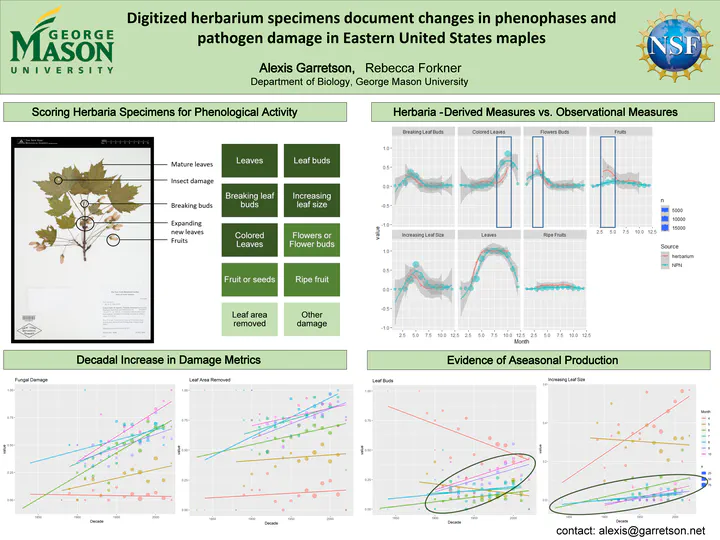Digitized herbarium specimen document changes in the timing and duration of phenophases and pathogen damage in Eastern United States maples

Abstract
Climate change can create novel patterns of growth or shift other aspects of plant phenology. For example, regrowth of leaves after late spring frost damage or increases in herbivory as a result of climate change can generate aseasonal new leaf production in summer and autumn. To determine if such changes have occurred in eastern United States forests, we examined digitized herbarium specimens of sugar and red maple for the presence/absence of expanding leaves, buds, fruit, flowers, and colored leaves, as well as fungal and herbivory damage. Comparisons of pre- and post-1960 herbaria collections show that maples experienced a lengthening of the time span of new leaf production. Specifically, we documented new leaf production in every month from April to September compared to a simple peak prior to 1960 of buds and expanding leaves in May. Additionally, decadal comparisons uncovered increases in fall fungal damage and herbivory over the past 200 years. Our results indicate that the effect of climate warming goes beyond a simple lengthening of leaf life span and instead radically change the seasonal timing of new leaf production with impacts on multi-trophic interactions. Additionally, our findings demonstrate the value of digitized herbarium specimens for long-term phenology research.
Type
Publication
Digital Data 2020